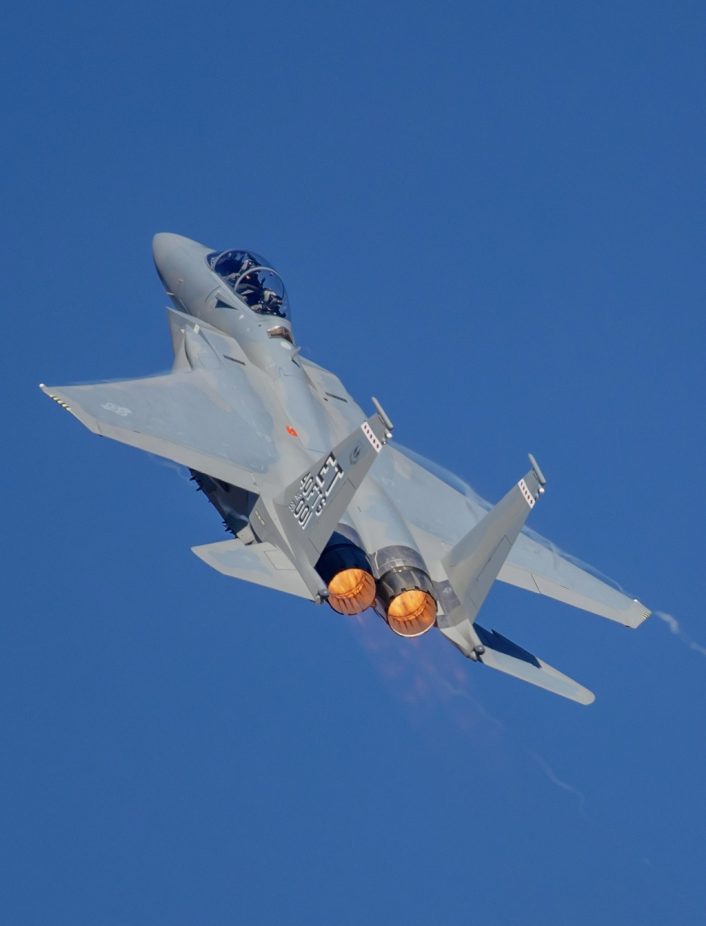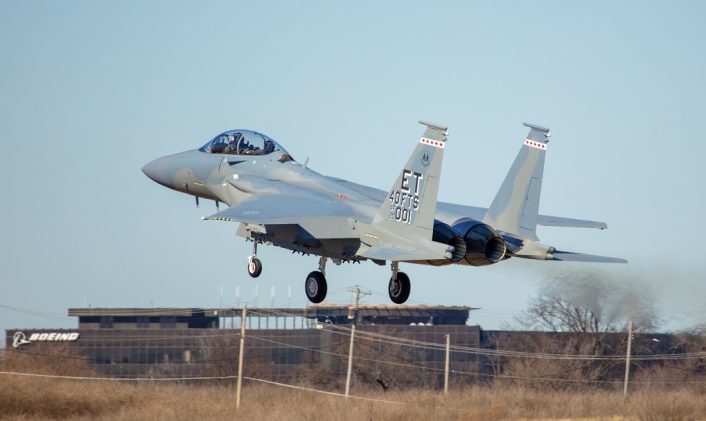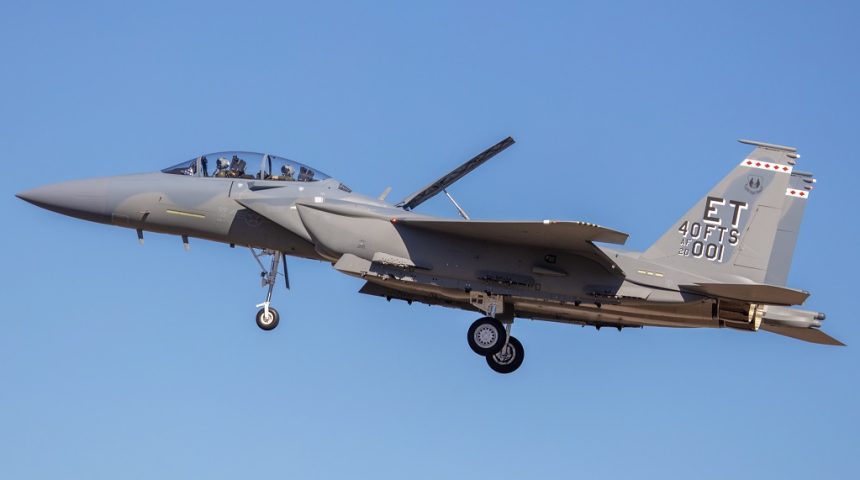The F-15EX was photographed during its first flight after receiving the classic F-15C/D camouflage and the 40th Flight Test Squadron insignias.
Few weeks after its maiden flight, the first F-15EX received its U.S. Air Force camouflage and the insignias of Eglin Air Force Base’s 40th Flight Test Squadron, which will be in charge of the jet’s developmental testing (DT). The aircraft received the classic F-15C/D Eagle camouflage, which by the way was applied also on the F-15SA (externally similar to the EX variant). The photos of the aircraft were kindly shared with us by aviation photographer Alex Farwell, known also by its Instagram handle vikingaeroimages,.
The first two F-15EXs are expected to be delivered to Eglin Air Force Base, Florida, by the end of the first quarter of 2021. While the 40th Flight Test Squadron will take possession of EX1, EX2 will be assigned to the 85th Test and Evaluation Squadron, which will be in charge of the operational testing (OT). The two units will work together to complete the combined developmental and operational testing simultaneously.
Upon delivery, the F-15EX’s initial missions will be aircrew familiarization and local airspace flights. Only after that, aircrews begin test and evaluation of the aircraft’s Air Force-specific hardware, software and weapons. Initial testing will focus on ensuring the software and avionics systems integrate well with the aircraft’s features like the advanced cockpit and controls, as mentioned by the Air Force last year.
The goal of the integrated DT and OT is to ensure the F-15EX meets the needs of the warfighter in its intended operational environment, said the press release, highlighting any possible system issues early and fixing them before the beginning of the aircraft’s increased production and delivery to the operational squadrons. This initial phase of tests will take approximately a year and a half.

Prior to the new advanced Eagle first flight, last summer, Boeing published the photos of the first two new aircraft being built, following a USD 1.2 billion deal for the first lot of eight F-15EX jets that will be delivered to Eglin Air Force Base to be thoroughly tested before starting to replace the oldest F-15Cs and F-15Ds in the U.S. Air Force fleet. The Air Force is planning to buy 76 F-15EX aircraft over the five-year Future Years Defense Program, a number that could eventually increase up to 144 aircraft.
The new F-15EX, developed from the F-15QA that was until now the most advanced Eagle variant, comes from a series of needs mainly emerged after the National Defense Strategy directed the U.S. armed services to adapt to the new threats from China and Russia. The aircraft, while extremely similar to the QA variant, features some US-only capabilities like the new AN/ALQ-250 Eagle Passive Active Warning Survivability System (EPAWSS) electronic warfare and electronic surveillance system and Open Mission Systems (OMS) architecture.
Initially the F-15C/D fleet was to be entirely replaced by the F-22A Raptor, the first 5th gen fighter aircraft of the U.S. Air Force. The service planned to buy 750 Raptors to replace both the F-15 Eagle and the F-16 Fighting Falcon, but that number was cut to 187 production aircraft, which is also less than the about 230 F-15C/D still in service. Because of this, the operational life of the Eagle had to be extended as it was initially scheduled to be retired in 2019.
To give you a better idea, consider that the youngest F-15C has been in service for 35 years already. In 2019, the decision was made to allocate the funding for the first eight of at least 144 F-15EXs, as this would be a more practical solution than waiting for enough F-35s to be available to replace also the F-15C. The Air Force confirmed in fact this summer that the F-35 will replace some of the F-15C squadrons, while the other ones will be replaced by the F-15EX.

A detail that many of our readers noticed in the comments after the first flight is that the F-15EX is a two seats aircraft and it will replace the F-15C which is a single seat aircraft, with only the D model being in a two seats configuration as it is used for training with an instructor in the back seat. When the F-15X program, also known as Advanced F-15, was first launched, both a single and two seat variants were proposed, called F-15CX and F-15EX respectively, and both with the same exact capabilities.
The Air Force ultimately decided to go only with the two seats variant, which will reportedly have the option to fly with a single pilot or both pilot and Weapons Systems Officer (WSO), with the latter being an important addition in complex missions which could also feature the command and control of “Loyal Wingman” drones in the future. One of the reasons for this decision could be also due to the fact that only the two seats variant of the F-15 is still in production, and the F-15EX program is all about the most affordable and immediate solution that can be fielded to refresh the Eagle fleet.
You can find more details about what we know about the F-15EX in this previous article where we analyzed the photos from the maiden flight and the available info from public sources.
Thanks again to Alex Farwell for the photos he sent us and make sure to follow him on Instagram for more!









